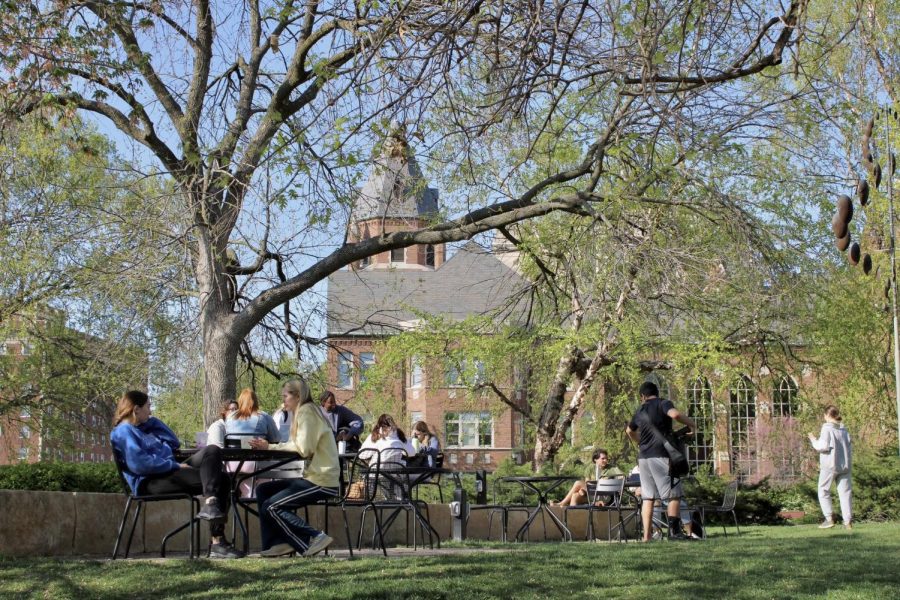Student Well Being Task Force Releases Draft of Strategies for a Culture of Well Being
On April 13, Saint Louis University’s new Student Well-Being Taskforce released its first comprehensive draft of strategies to move SLU “toward a culture of well-being.” With 3 different ways to interact with the draft, the SLU community was invited to review and provide feedback on the recommendations.
This announcement comes after the tragic string of suicides SLU has unfortunately experienced this academic year.
The Student Well-Being Task Force, created in Sept. 2021, is a combination of students, staff and faculty focused on finding areas in SLU’s culture that can be improved to promote the mental well-being of everyone in the community.
The task force was charged with assessing SLU’s health and well-being of students and developing recommendations to advance a culture of well-being for all students. The task force met in October and November and began listening sessions in order to do a “deep dive” into SLU’s culture. They spent March and April drafting their recommendations and creating a cohesive document.
The longest form of the task force’s recommendations is a thirteen-page document split into four sections. These sections are labeled as strategic priorities and can be considered the committee’s main goals. Inside each of these goals are detailed plans, expectations, and explanations for execution by SLU.
The first strategic priority is “Our commitment to student flourishing is embedded throughout the institution and is reflected in our priorities, actions, and communications.” This priority includes revision of the academic calendar and the development of a well-being toolkit that can be used by faculty, staff, and students. Eric Anderson, Assistant Vice President for Student Wellbeing and co-chair of the Student Wellbeing Task Force, explained that the toolkit is to be designed and implemented differently among departments.
“It would be a toolkit that would be available for faculty members as they develop their curriculum and classroom setting,” Anderson said.
The next strategic priority is using evidence-based approaches to support student well-being and understanding that different groups require varying approaches. When evaluating mental wellness, an evidence-based approach can mean several different things. “Assessment might look at what the resources are that we have available for students and how students are experiencing them,” Anderson explained. Bolstering the capacity of mental health resources and developing a Student Well-Being Coalition are a few ways the task force envisions evidence-based solutions being applied.
At first glance the Student Well-Being Task Force and the Student Well-Being Coalition share similarities. However, Anderson and the task force hope that the Coalition will be a source of accountability for SLU’s administration. “The purpose is to be a body that would ensure the strategic priorities and recommendations are moving forward,” Anderson said.
The third strategic priority has the intention of creating “spaces and opportunities for connection and belonging for all students.” This includes designating more safe spaces on campus for students that hold marginalized identities. With SLU being a predominantly white university, there are only a few spaces specifically designated for students that are in the minority.
The third priority also discusses the creation of a wellness ambassador program. While there is not a specific vision for this program in the draft, it takes inspiration from similar wellness ambassador programs at other universities. At the University of Wyoming, wellness ambassadors organize and plan events and programs focused on the well-being of students. However, in SLU’s draft, there is mention of using the ambassadors to also facilitate open dialogue about students’ mental health challenges.
Finally, the fourth strategic priority focuses on the Jesuit ideal of cura personalis or “care for the whole person.” The draft mentions allowing students to advocate for their wellbeing through “wellness plans” and the creation of a “Big Ideas” program for well-being initiatives. Additionally, the final priority calls upon SLU to create an environment in which faculty, staff, and administrators can model self-care. This objective cites changing expectations around email responding on time off as well as adopting a policy of flexibility during times of crisis.
There is little doubt that the Student Well-Being Task Force has proposed multiple pivotal changes, but there is nevertheless a long road ahead for both the Task Force and the SLU community. The draft is still in its infancy. When the Task Force released its draft it encouraged everyone to respond to the priorities and objectives through a survey. Closing about ten days after the recommendations were made public, the Task Force must use this information to revise and solidify their proposal.
“We wanted to provide folks with opportunities to give different levels of feedback because we do know that [reading the draft] is a time commitment,” Anderson said. As of Monday, April 25th about 75% of respondents had given their feedback through the shorter version of the survey. While this poses a difficult challenge for revisions of the draft, Anderson is hopeful that the 25% of people who gave in-depth feedback will supplement the shorter survey responses.
After reviewing survey responses and revising the draft, the Task Force will work to finalize and submit the proposal to the University. From there, groups will work together from all departments and entities to make these priorities a reality.
For students who are experiencing the current SLU reality, the draft does offer some hope. MaryClaire Pavlick, a sophomore Public Health major, feels this hope but is also skeptical. “I think there are a lot of great ideas in the draft that would really help students. I especially think the idea of having wellness ambassadors is great,” Pavlick stated, “But I don’t think it’s going to be easy. Everyone is going to have to work together, professors, administrators, and students, if we want to create a culture that truly does support and nurture mental wellbeing.”
Your donation will support the student journalists of Saint Louis University.





